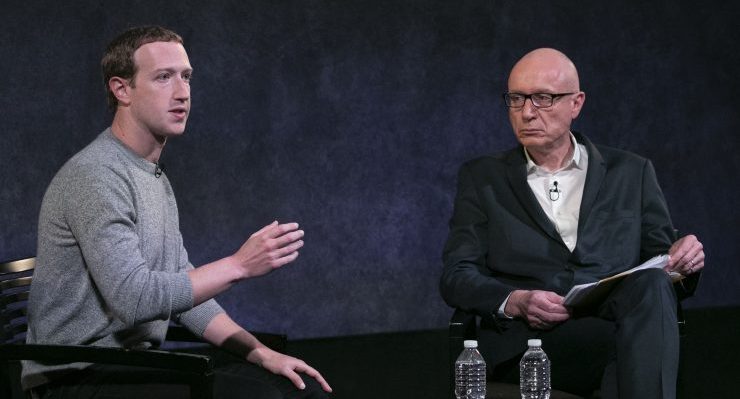
Last week, Australia’s media whipped out their, um, ambit claims and flopped them on the ACCC’s table for the proposed mandatory code of conduct governing Google and Facebook: the platforms should pay struggling media companies $600 million, said Nine chair Peter Costello. No, not enough! Give us a round billion, thundered local News Corp chief Michael Miller.
The claims were in response to reporting that Google and Facebook are now churning about $6 billion in Australian advertising revenues, or over 70% of digital advertising.
But in the middle of this, a PwC UK survey found a tentative answer to one of the big known unknowns: just where does all the money go?
Turns out about half the money spent on advertising on the web is being absorbed by the ad tech that underpins the automated distribution of ads across the web.
Who cares? We all should. It’s not about the platforms ripping off ad-supported content industries. It suggests that the entire fabric of the commercial web — from cookies and data collection through to programmatic advertising — is a self-reinforcing Ponzi scheme.
Who dominates ad tech? Google and Facebook, of course. On top of the dollars they clip through the automated process, there’s the money they make when that same ad tech directs the ads — algorithmically, of course — to the platforms’ products, such as YouTube.
Ad tech is challenging the core promise of the algorithm-powered internet: that it magically makes this both better and cheaper than former analogue options.
Now it’s time to say: maybe not so much. When it’s mainly supporting its own infrastructure, it’s undermining the historic justification of ads that they support some broader social good, like television or news.
“Opaque.” “Black-box like.” They’re the sort of words most often used to describe the tech that powers the programmatic advertising that funds the commercial web.
Last year’s digital platforms inquiry by the ACCC remains one of the best analyses: the words “ad tech” appear 231 times in its report, and it is carrying out a deeper look at the issue.
Ad tech works a bit like this: once an advertiser commits to spending on a campaign, the agencies prepare the advertising strategy. The ads and the strategic ask (say, urban under 30s) are placed on a so-called demand side platform. Meanwhile, web publishers (say, a news masthead) list the space available for ads (aka “inventory”) in a supply side platform informed by all the data the internet has captured about you and me.
An algorithm shakes hands between the two sides matching ask with availability and the ads turn up on the publisher’s sites. It’s a dynamic process, which means there’s no human intervention with prices changing inside the black box based on supply and demand.
Although they’re not the only players, the tech platforms dominate from demand side through handshake to supply side. Each stage clips the ticket including about 15% that the UK survey calls “unknown delta” that just kinda vanishes in the middle.
At the end of the day, says the survey, an average of just 51% of the original spend ends up with the publisher who hosts the ads. It’s better for video (about 65%) and display (54%). Publishers do marginally better when they run through so-called private marketplaces — tech (and data) they partly control — collecting 54%, compared to 49% from open market places.
It is a system rife with fraud, both with ads from scammers and with fake publishers manufacturing inventory. (Remember: fake news began in the 2016 US election with boys-just-wanna-have-fun Macedonian hackers sending fake news viral to cash in on the programmatic ads it attracted.)
Meanwhile, the debate over Australia’s planned mandatory code that rewards publishers has spilled overseas with a head-to-head between The New York Times’ Ben Smith (“It’s great!”) and What Would Google Do? author Jeff Jarvis (“Oh FFS, no”).
Regardless, the ACCC look at ad tech is more significant than the publishers’ mandatory code. It was an old 20th century joke that half of all advertising was wasted, we just never knew which half. In the digital world, it looks like that half is being wasted on the tech that enables it.









“it’s undermining the historic justification of ads that they support some broader social good, like television or news.”
and ad tech, certainly in the case of Google, provides, for free, the world’s largest resource of knowledge at everybody’s finger tips. Clearly a social good.
I think I’d rather that than some shitty reality or game show – the back bone of TV programming since forever.
Have zero sympathy for legacy media companies who comprehensively missed the boat.
I’ll assume that the unfortunate image of “… whipping ’em out and flopping on the table” was deliberate.
That’s about the size (sic!) of it.
And like all such exercises, will shrivel & shrink and disappear.
Youtube is becoming as unwatchable as free to air TV. When will the highly paid ladies and gentlemen understand their market? The majority of us do us do not want to spend 50% of our viewing time on content and 50% on irrelevant, repetitive messages? I would suggest that this is a primary reason we have migrated from Free to air TV.